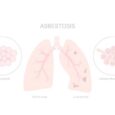The word “addiction” often conjures images of people struggling with substance abuse, but its reality is far more complex and nuanced. Addiction doesn’t just affect individuals; it ripples through families, communities, and society at large. In this blog post, we will peel back the layers of addiction to understand its impact, explore the science behind it, and discuss strategies for breaking its grip. If you’ve been touched by addiction in any way or seek to better understand its pervasive effects, read on to discover how awareness and action can make a profound difference.
The Hidden Influence of Addiction
Addiction is a thief, silently stealing time, joy, and potential from those it grips. It affects millions worldwide, with consequences that extend beyond personal health. Whether it’s substance abuse or behavioral addiction, such as gambling or pornography, addiction’s chains are often invisible but undeniably strong. It alters relationships, disrupts communities, and burdens healthcare systems. Recognizing addiction as a multifaceted issue is the first step in confronting its challenges.
While addiction can manifest in various forms, its core often lies in an overwhelming compulsion to seek out certain behaviors or substances despite harmful consequences. This compulsion is not merely a matter of weak willpower but is often rooted in complex neurological processes. By understanding these processes, we can better appreciate why breaking free from addiction is not a simple decision but a challenging, lifelong battle.
Furthermore, the stigma surrounding addiction can exacerbate the problem, making individuals hesitant to seek help or speak openly about their struggles. By fostering empathy and understanding, we can dismantle the barriers that keep people isolated in their battle with addiction.
The Brain’s Role in Addiction
The brain is a marvelously intricate organ, responsible for everything from our thoughts to our habits. But it’s also the center of addiction’s web. When someone uses addictive substances or engages in compulsive behaviors, they trigger the release of dopamine, a neurotransmitter that creates feelings of pleasure and reward. This rush encourages repetition, laying the groundwork for addiction.
Over time, the brain’s reward system becomes hijacked, rewiring itself to prioritize the addictive behavior. This can lead to increased tolerance, where more of the substance or behavior is needed to achieve the same effect, and withdrawal symptoms when it’s absent. These changes can significantly alter judgment, decision-making, and behavior control.
Understanding these neurological mechanisms demystifies addiction, revealing it as a chronic brain disorder rather than a simple choice. It highlights the importance of medical and psychological interventions that address these brain changes as part of the treatment process.
Types of Addiction Substance and Behavioral
Addiction is not confined to drugs and alcohol. Behavioral addictions—like compulsive shopping, gambling, or using pornography—share many characteristics with substance addictions. Both types involve a loss of control, continued use despite negative consequences, and cravings or withdrawal symptoms when attempting to quit.
Substance addiction is often more visible and stigmatized, but behavioral addictions can be just as damaging. For example, breaking a pornography addiction requires understanding its unique triggers and developing strategies to cope with them. While substances alter brain chemistry directly, behaviors like pornography use change reward pathways over time, creating entrenched patterns that are hard to break.
Recognizing the commonalities between substance and behavioral addictions can inform treatment approaches, emphasizing the need for personalized, comprehensive care plans that address both the psychological and physical aspects of addiction. It’s crucial to understand that both types of addiction deserve equal attention and intervention.
The Social and Economic Toll of Addiction
The impact of addiction extends far beyond the individual. Families often bear the brunt, dealing with financial strain, emotional distress, and relationship breakdowns. Children in households affected by addiction may experience neglect or trauma, perpetuating cycles of substance abuse and psychological issues.
On a broader scale, addiction can have staggering economic implications, costing billions in healthcare expenses, lost productivity, and law enforcement. Communities may face increased crime rates, reduced workforces, and strained social services. These factors create a cycle of poverty and addiction that is difficult to break without systemic intervention and support.
Addressing addiction requires a holistic approach that considers these social and economic factors, advocating for policies and programs that support affected individuals and communities. This might include access to mental health care, education, rehabilitation services, and employment opportunities.
The Power of Early Intervention
Catching addiction early can significantly increase the chances of successful recovery. Interventions that engage individuals before their habits become deeply entrenched can reduce the severity and duration of addiction. Screening tools, education, and awareness campaigns play crucial roles in identifying those at risk and guiding them toward help.
Support networks—including family, friends, and community organizations—are vital in early intervention efforts. They can provide the encouragement and resources needed to seek professional help, reinforcing the message that recovery is possible and worth striving for.
Prevention efforts should also focus on young people, providing them with the knowledge and skills to resist peer pressure and make informed choices about substance use and other risky behaviors. Schools and communities can play a pivotal role in these efforts, creating environments where healthy habits are nurtured.
Strategies for Breaking the Cycle of Addiction
Breaking free from addiction is challenging but achievable with the right strategies and support systems in place. Prevention is key, and it begins with education about the risks and consequences of addiction. Schools, workplaces, and healthcare providers can all contribute by offering resources and training on addiction prevention.
Once addiction takes hold, a combination of treatment options is typically most effective. This may include detoxification programs to manage withdrawal symptoms, inpatient or outpatient rehabilitation, therapy, and medication-assisted treatment. Each individual’s path to recovery is unique, and treatment plans should be tailored to their specific needs.
Ongoing support is crucial for maintaining sobriety and preventing relapse. This support can take many forms, from support groups and counseling to lifestyle changes and mindfulness practices. Building a strong, supportive network and developing coping strategies can empower individuals to overcome addiction and lead fulfilling lives.
Conclusion
Understanding addiction’s causes, types, and consequences is the first step toward taking action. Whether you’re struggling or supporting someone who is, recovery is achievable. Relapse can be part of the journey, but it offers growth opportunities. For those unaffected, educating yourself and others about addiction’s dangers is crucial. Together, we can break the cycle of addiction and foster healthier communities. Let’s keep the conversation going.



